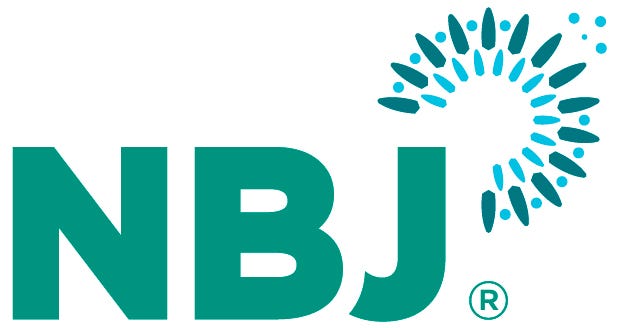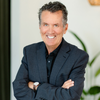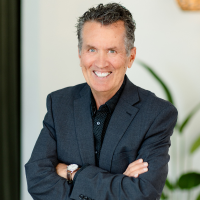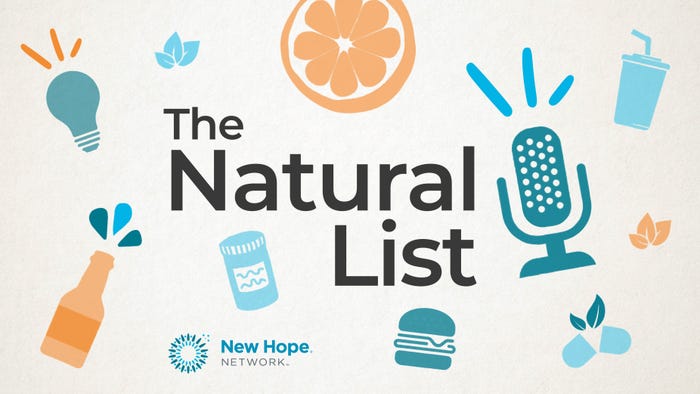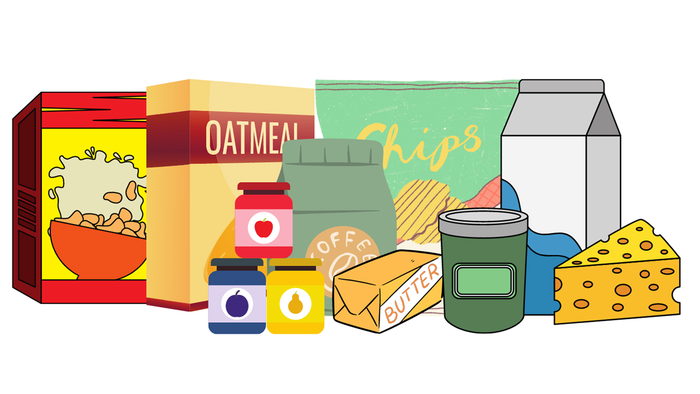
The challenge for sports nutrition in the shelter-at-home era can be summed up with a simple contrast: the gyms are closed, and the bike shops are sold out. A category with a history of marketing to weightlifters might be ill-equipped to shift its focus to endurance sports, a market ignored, or at least neglected, for decades.
Once a competitive bodybuilder, Clean Machine founder Geoff Palmer can’t go to the gym, even in notoriously laissez-faire Florida. So, he’s walking. And he’s frustrated—“That’s all that’s available,” he says—but he is also frustrated by sports nutrition’s failure to reach endurance athletes. When he was a category manager at the Vitamin Shoppe chain, he was directed to build up a section dedicated to endurance sports. Runners number in the many millions, and cyclists have expendable income made obvious by their pricey bikes. But neither showed up.
“It was an epic failure,” he says. “It was one of the lowest performing sections in the store.”
It��’s not that sports nutrition lacks products that could provide benefits to the endurance athlete, but the whole conversation for those athletes tends to begin and end with carbohydrates and hydration in the form of bars, gels and Gatorade-like concoctions.
And nary a branched-chain amino acid to be seen.
Consumers are walking, biking and running more
If nothing else, the coronavirus pandemic has inspired a mass migration, one that begins on the couch and ends on a hiking trail. A substantial number of respondents in a New Hope Network consumer research, 44.9%, said they were doing more biking, running or walking/hiking. Walking/hiking showed the biggest increase by far—24.1%. In contrast, only 7% said they were incorporating more weight lifting into their fitness activities. Online exercise and yoga also showed an important uptick, 21.8%, but considering the fact that at least some of the online workouts could be considered aerobic, endurance sports appear to be the strongest growth area.
GPS fitness tracking data from Garmin reveals some dramatic changes in outdoor and endurance activity. As skiing and snowboarding dropped by 96% in March, indoor cycling shot up 64%. Weather has an obvious impact on outdoor activities, but while walking increased by 18% in the second half of March 2019, the increase doubled that in 2020, climbing by 36%.
That increase in activity, however, does not automatically turn into an increase in sales for sports nutrition. Products like creatine and beta-alanine are not familiar outside the confines of the weight room. While 35% of respondents in the New Hope research said they foresee their consumption of protein powders will increase in the next three months, only 8% said it would increase considerably. A much larger number, 58%, said they do not believe their consumption will change at all. The takeaway might be that protein is already part of their daily routine for many of these consumers. That only 6% said they believe they will decrease their consumption bolsters that argument.
It certainly does not set the stage for success in this budding endurance age.
Endurance supplements face channel isolation
For Compound Solutions CEO Matt Titlow, the challenges lie in the channels. Compound Solutions is an ingredient innovator, and he knows he has ingredients that would help endurance athletes find an edge for themselves. He’s just not sure where they are going to find the product.
“There’s never been an Endurance GNC,” Titlow observes. “When you look at REI, which is the default endurance supplement area, there are just not enough stores, and too many people are going in there for camping equipment.” Supplements, he says, “are on the periphery.”
Reached by Nutrition Business Journal as he drove a shop van into to Denver to talk a distributor out of some bikes, Boulder bike shop owner Russ Chandler shares a lament that is growing familiar across the country: “I have no bikes to sell.” This New York Times headline explains the situation simply: “Thinking of Buying a Bike? Get Ready for a Very Long Wait.”
Bike sales and bike service are the obvious bread and butter of bike shops, and the scant amount of nutrition Chandler’s Full Cycle provides isn’t a big contributor to the revenue stream. Chandler says it’s only been the last four or five years that cyclists have begun to talk about nutrition beyond carbohydrate gels and Gatorade, even in fitness-obsessed Boulder. Sports-focused CBD is among the only supplements his shop sells, and though he sees the potential in other supplements, he’s not seeing the big sales.
If better sales are going to happen, it might take a brand already known in the supplement space. “It makes sense if you’re a company that has made it with the gym type of athletes that you might think of partnering with somebody that is known in the endurance world.”
The bike shop owner has a bit of a heads-up from the frontlines of endurance for those gym-focused brands. “I had a football player come in,” Chandler says, “and he said ‘I need to get on a bike.’”
The channel challenge is unlikely to solve itself, says Joel Kocher, CEO of nitric-oxide supplement maker HumanN. “If we have learned anything in the last 90 days, it’s that all bets are off,” Kocher said in an email. “Everything is changing. And that includes our industry. Perhaps this is the dawning of a tectonic shift from the weight room to venues where people don’t congregate.”
Noting that “if people are not willing to go back to their favorite restaurant, I believe you have to be skeptical that the gym snaps back to its previous lifestyle relevance.” Kocher predicts that smart innovators are already outthinking legacy sports nutrition brands. “We have all heard of Peloton. Well, there are a thousand entrepreneurs at work right now trying to figure out how to replicate Peloton with other forms of home exercise. Those forms of exercise are going to require a different rubric for an effective workout.”
That rubric likely does not include a gym or any location where people are likely to buy or even talk about sports nutrition products. “People are likely to move their workouts outdoors until we have a real vaccine solution,” says Kocher.
Brands must prioritize the where before the how
To sell to the endurance athletes means penetrating the cultures of those sports, and reaching athletes who are not trading tips in a gym is not going to be an easy pivot for many brands. Joshua Schall, director of business strategy for MusclePharm before launching his CPG brand consultancy, says brands that “do a really good job at communicating with their customers about who they are and what they’re about are doing extremely well” with gyms closed and retail exposure down.
But for brands to shift focus from the weight room to the trailhead will be difficult. All it takes is a glance at most sports nutrition brand’s Instagram feeds to see that challenge. “Most of their images are usually with people inside of a physical gym working out,” he says.
Those brands may have to accept a radically altered arena for delivering their message. Schall is frank about that: “The whole gym thing is tough because the model is not sustainable in the post-COVID world.”
Protein may have made the leap from weight room to supermarket aisle—“Protein Powder makes sense to people because they can relate it to, like, a chicken breast,” Schall says—but translating ingredients known in bodybuilding into language understood by endurance athletes could require a kind of seismic rebranding beyond the reach of legacy brands.
“I don’t really see anybody talk directly towards cyclists and say, ‘Hey, we’re here. We’re here for you. We have products for you. We are you. There’s none of that authenticity,” Schall says.
Just because it hasn’t been done doesn’t mean it can’t be done, contends Titlow, but it certainly suggests that the task will be difficult. From his perspective, a brand will have to go at the influencer world in a new way. He points to Nick Bare as an influencer who built a sports brand in the gym and suggests the same could be done in endurance.
“We can apply those same principles to endurance. We just haven’t yet,” Titlow says. Until somebody proves that endurance athletes are going to make more purchases than they did in that Vitamin Shoppe endurance section, no brand has ponied up the marketing budget to build the endurance army that could prevail. And advertising on its own is a losing proposition, Titlow explains. “It’s too expensive to advertise to somebody who is not buying.”
Finding the influencers and then linking those influencers directly to sales is the only way sports nutrition can move sales out of the weight room and onto the bike path. “You’ve got to have online conversion,” Titlow says. “Retail is not where it’s going to happen.”
Perfomance or wellness—which approach is more successful?
The message those influencers could share is fairly simple, says Robert Wildman, chief science officer at Dymatize, a major presence in the sports nutrition protein space. Endurance athletes see nutrition solely as fuel, Wildman says. It’s a carbs in/glycogen out world. The next and obvious step is protein, but the conversation has to move past fuel to 'machinery.'”
The machinery is the muscle and the lungs, he says. It’s what propels the runner down the trail or spins the pedals on a triathlete’s carbon-fiber bike. “That’s not a fuel thing. That’s a machinery thing, and the machinery is protein,” Wildman says.
That should be a pretty easy conversation to have, he says, particularly with cyclists who obsess about the machinery of their bikes down to the grams. But no brand he can think of has been able to engage in such a conversation with endurance athletes with great success. He points to Gatorade, which has struggled to sell protein, and wonders what part brand identity has to play. “Is it the brand or the messaging that’s not connecting with consumers?” Wildman asks. “It may be a little bit of both.”
It might also be a matter of timing.
Mitzi Dulan is a fitness nutritionist with 3.5 million followers on Pinterest. She also has a “protein balls” company branded as simplyFuel, suggesting that the connection between Wildman’s fuel and machinery is not so great a leap. She has helped design nutrition programs for athletes at the NFL level and written about diet at the soccer mom level. She thinks protein should be an easier sell to endurance athletes now than ever before, with people paying more attention to what they are eating and protein having a bit of a moment in nutrition.
But Dulan cautions that the legions flocking to the bike path may not be the right audience for anything more targeted than protein. Most people, even in a gym environment, are not there to build muscle or performance. They are there to get healthy, or stay healthy. “Certainly there are those muscle guys, but when I think of the average person going to Lifetime Fitness, that’s a small percentage who are doing pre-workout drinks.”
That same division applies to endurance athletes. Dulan has worked with high-level triathletes who are meticulous about diet, but that’s not the athlete she sees riding by her Kansas City house. “Some people might have more time right now and want to spend more time outside and could adopt that endurance and endurance sport, but it is a pretty unique kind of person who does all that training,” Dulan says.
Palmer is also appreciating that time outside even as he misses the gym routine. He goes for walks and he sees the parks and paths brimming with people who weren’t there before. He is not convinced they are looking for the “fitness” defined in marketing as six-pack abs and personal bests on the triathlon course. They are looking, he says, for “wellness.” High coronavirus morbidity for people with obesity or diabetes has set off a chorus of wakeup calls.
“I think something like COVID-19 is really going to drive that change.”
And whatever sport these new fitness converts are doing, they are showing up at cleanmachineonline.com. Clean Machine isn’t focused on endurance sports, at all. And it’s not suffering the “epic failure” fate of the endurance section he helped build at Vitamin Shoppe either. Palmer’s brand is sharing in the success of the entire supplement industry. He didn’t have to pivot or rebrand. He was already selling wellness with the fitness.
“We’re up 100%,” he says.
About the Author
You May Also Like
